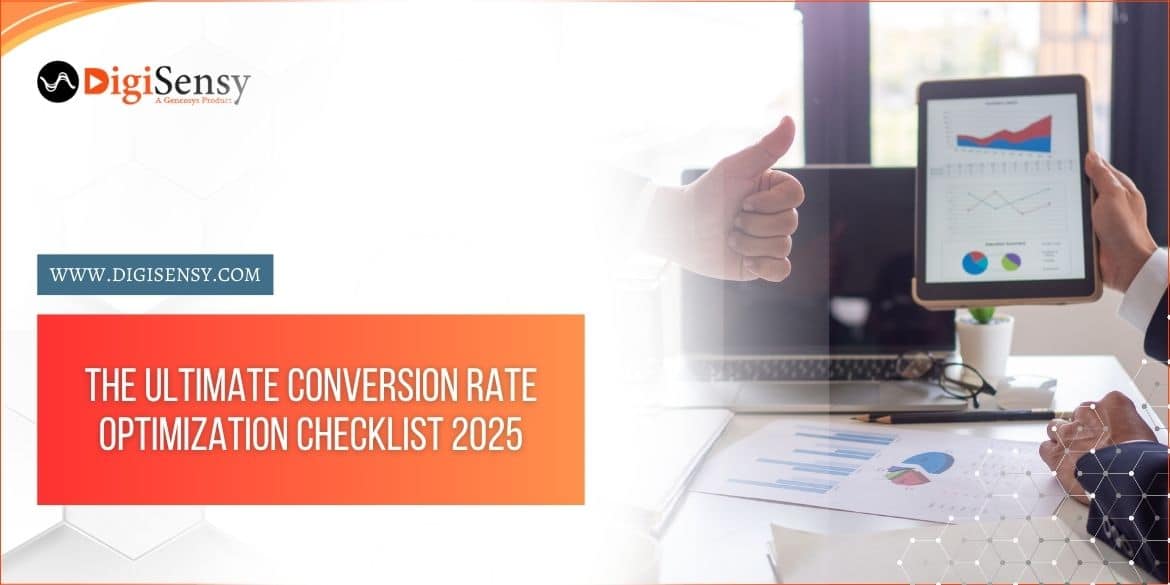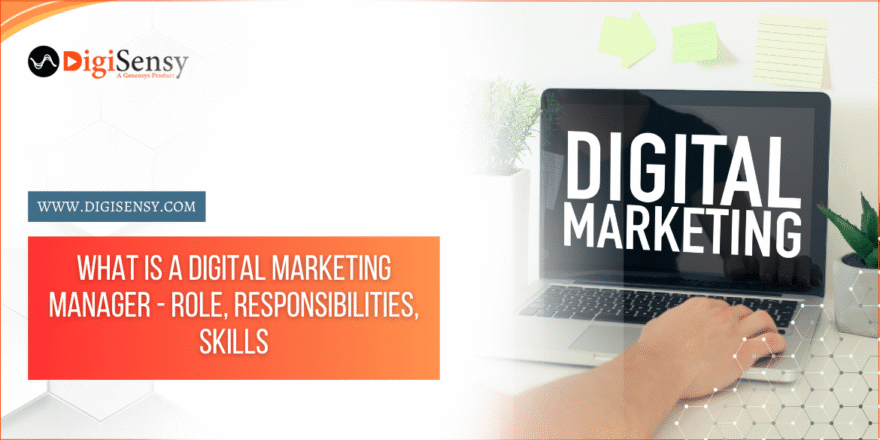Driving traffic to your website has been half the battle. The other half, most importantly, is forcing those engagements to take some meaningful action through increasing CTR: product sales, lead form completions, app downloads, or newsletter sign-ups, among a few. The conversion rate is, therefore, the key metric to be looked up to.
DigiSensy tries to build the Authority for digital businesses with the best output from every click. It is on their behalf that they have prepared this exhaustive CRO checklist for 2025 to help you dig out hidden opportunities, improve your UX, and influence a higher ROI without an increase in ad spend.
Explanation of CRO?
Driving traffic to your website is only half the battle. The real challenge and reward that comes from Conversion Rate Optimization is the act of upgrading the website or landing page experience to get more visitors to perform a desired action. Actions may include paying for goods, signing up for a newsletter, requesting a demo, or downloading a resource. CRO combines analytics insight, user psychology, creative design, and continual testing, improving every step of the user journey. It’s about working on converting the traffic building; in other words, increasing their conversions. Instead of merely increasing the volume of traffic, CRO makes your existing traffic work harder to yield results that bring optimal results faster.
Why 2025 Is the Year to Prioritize CRO
Today, in 2025, users are more aware, impatient, and truly mobile-first. With these changes in digital behaviours and with businesses’ attention shrinking, it is no longer sufficient to work at just attracting traffic; you must now work at making effortlessly converting experiences for that traffic. CRO makes every visit count, improving UX, decreasing bounce rates, and getting users to finish valuable actions; it’s the best way to get more payoff from your marketing dollars, retain customers, and expand growth in a data-driven way for the long term.
The Ultimate CRO Checklist 2025
Here is a complete breakdown of the major points of focus worthy of consideration by Conversion Rate Optimization in 2025. This can work as the manual to ensure your website does not yield just visits but results too.
-
Define Clear Conversion Goals
Improving the conversion rate that is tinged with success cannot be attained without first defining success in the realm of conversion rate improvement. Primary goals (purchases, sign-ups) and secondary goals (downloading an email, watching a video) must be established. These goals must be directly linked to the business KPIs. These conversions must be accurately tracked across user journeys using the likes of Google Analytics 4 or Mixpanel to know where exactly your improvements are needed.
-
Build Detailed Customer Personas
Knowing who the users are, what they’re looking for, and how they’re behaving on the site is essential for creating converting experiences. Build customer personas that respond to motivations, pain points, or buying triggers. Conduct behavioural analytics, heat maps, and session recordings to collect good data about how users interact with your pages. On-site surveys, feedback tools, and user polls are great qualitative tools that can give insight into where your messaging or UX is perhaps not cutting it.
-
Audit Conversion Funnel
An in-depth audit of your sales or lead funnel should reveal drop-off points at very critical junctures. Chart the entire user journey from ingress to conversion and analyze critical interruptions or points of confusion at each step. Find exit-heavy or bounce-rich pages, especially on mobile. Use funnel visualization tools to identify the page where users abandon the process so that you can start optimization from the very top.
Page-load speed affects conversion rates directly, especially under mobile settings. Even a one-second delay can cause a drop in engagement and trust. In 2025, your website should be fast and complete, loading within two seconds on all devices. This can be achieved with image compression, lazy loading, and code minification. Also, review hot hosting, caching, and CDNs, and make necessary improvements.
-
Improve the Navigation and Structure of the Site
Conversion killers consist of poorly designed and confusing navigation menus. Simplify your menu to gently direct users onto the major pages. Make use of calls to action and design elements that are crystal clear, visible, and straightforward to reduce mental workload. Try implementing sticky menus, breadcrumbs, and structured content hierarchies so users can work through what they want fast.
-
Create Compelling, Action-Oriented CTAs
CTA buttons are roads to conversion. Use strong and clear action language, where the users know what will happen once performed. Examples include “Start Free Trial,” “Download the Guide,” or “Get Instant Access.” Location, colour, and size are other exciting considerations. CTA should be visually dominant, but should never confront the brand colours. Choose colour or wording to create a sense of urgency sometimes-“buy now,” “offer ends today,” “book now”-so that every page leads users to yet another attractive step.
-
Embrace A/B and Multivariate Testing
Testing is the heart of an effective CRO. You never will know what works without testing it. Test with A/B headlines, images, button placements, offers, and page layouts. Multivariate testing, on the other hand, looks at how several variables interact and is best used for very complex experiments. Use CRO platforms to perform structured experiments and further improvements based on data. Examples include Optimizely, VWO, or Google Optimize.
-
Make Your Forms Easy to Complete
The longer and more confusing your forms are, the more resistance they create and the more your conversions drop. Limit fields to capturing only essential information. If necessary, split the forms into several steps, including a progress bar showing users where they are in the process. Inline validation, of course, is helpful and clears an extra way on the journey. Include instructions and autocomplete options, too, as they reduce frustration and help increase form completion rates.
-
Social Proof and Trust Elements
People trust people. Turning your site into a company with social proof can bolster its credibility and conversion. This might include testimonials, reviews, ratings, or logos of a few happy clients; perhaps even case studies. Trust badges for SSL (Secure Socket Layers), secure checkouts, or a logo of ‘money-back guarantee’ assure visitors to give your site the trust of their eyes. Use photos and names with a real touch so that they relate to the customer.
-
Mobile and Accessibility Optimization
The world is now increasingly mobile, and with mobile-first indexing, great emphasis is on a great mobile experience being delivered through your site. Test every aspect on various screen sizes-from product pages to checkout flows. Accessibility should go hand-in-hand with that. Ensure adherence to the WCAG 2.1 with your site, alt tags in place, keyboard navigation enabled, font readable, and screen reader activated. Everybody deserves a frictionless experience.
-
Refine Copywriting for Conversions
A good copy doesn’t just inform, but rather it persuades. Headlines should state the value quickly, and body copy should mainly focus on the benefits rather than the features. Use clear and simple language that matches your brand voice and will relate to your target audience. Make use of psychological triggers, like scarcity (“limited time offer”), social proof, authority, and reciprocity, to gently push the user along toward conversion.
-
Use Visuals and Media Manipulation Strategically
If used suitably, visuals improve user engagement and help bring out the message. Use good-quality images, icons, or videos to support your value proposition. Product demos, explainer videos, and interactive features such as sliders help improve understanding and build trust. Make sure all media is fully optimized for fast loading and looks awesome on all devices.
-
Retarget and Personalize the Experience
Some users may never decide to convert during their first visit. Retargeting will help bring back lost visitors through specific messages, offers, or reminders. Dynamic content teaches you how to personalize headlines, product recommendations, or CTAs based on user behaviour, location, or referral source. If integrated with your CRM or customer data platform, this will enable you to segment and focus your audiences better.
-
Create Laser-Focused Landing Pages
Aim for one objective and one purpose only for a high-converting landing page. Eliminate excessive links and distractions. Content should align with specific user intent (especially from ads or emails) and be supported by headlines, big visuals, and social proof. The call to action should be crystal clear and be visible to the user many times as they scroll. Be sure to run tests on different landing page layouts and copy variants to nail it.
-
Analytics for Continuous Improvement
Analytics must support your CRO strategy. Measure KPIs such as bounce rate, exit rate, average session duration, and, of course, conversion rate. Establish custom events and goals to track micro-conversions like video plays or scroll depths. Segment traffic into device, channel, and behaviour dimensions to discover new improvement windows.
-
Put CRO into a Continuous Working Cycle
CRO is not a one-time fix; it is an ongoing learning, testing, and refinement process. Keep track of the effects of each change, learn from failed tests as well as from successful ones, and maintain a testing backlog to keep the current optimization efforts going. In a way, it must help in mirroring audience growth and the business journey.
Final Thought:
In DigiSensy’s books, CRO remains an ultimate weapon in every high-performing digital brand. Rather than chasing more traffic, we help you get more conversions from your existing pool of website visitors. Use this checklist as your starting point, but true results always come from continuous commitment complemented with experiments and user empathy.
Make 2025 the year in which you stop leaving conversions on the table. Is your team in need of a full CRO strategy and consulting or a quick audit? Then our team looks forward to assisting you in developing smarter, faster, and more profitable digital experiences!




